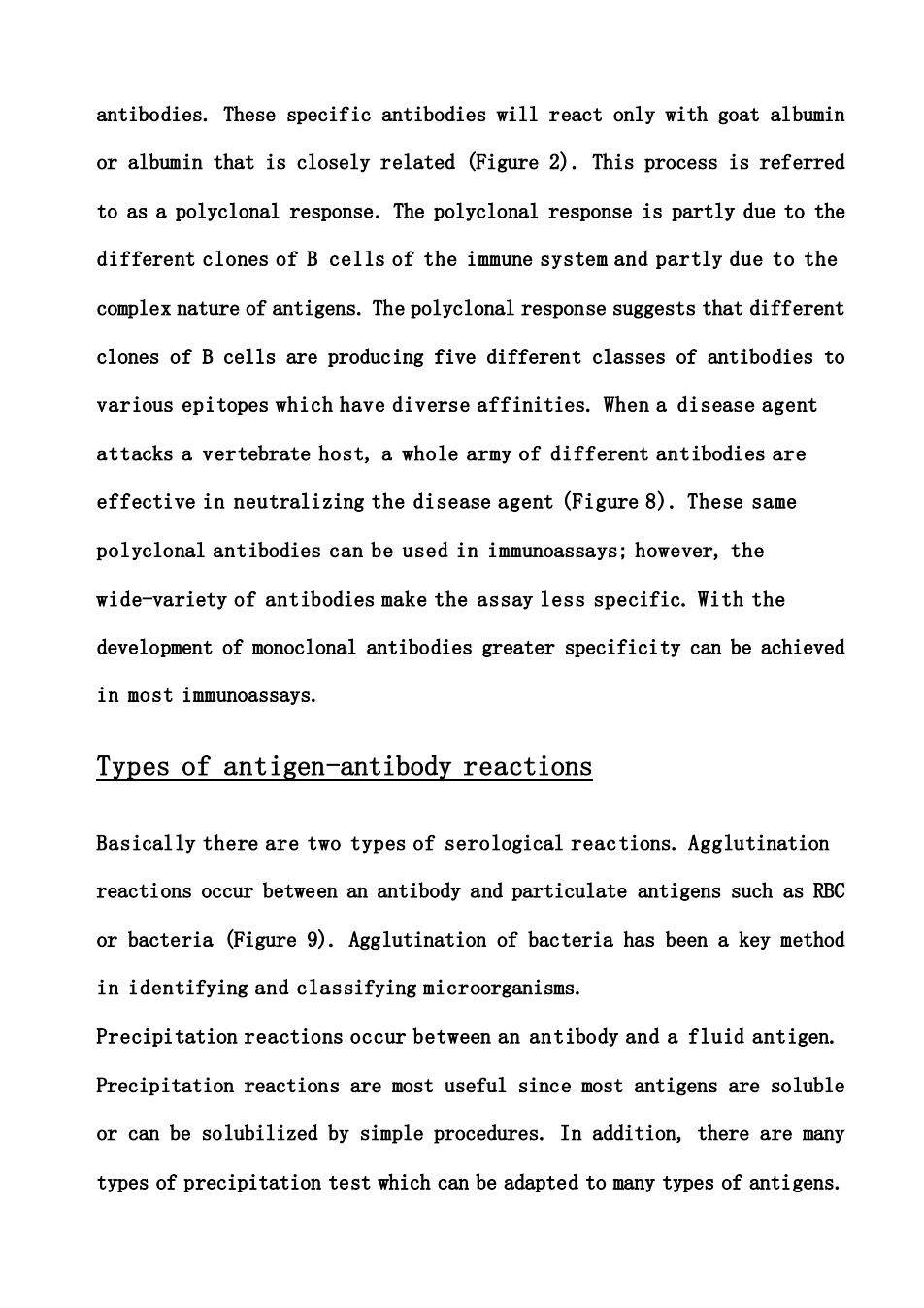正在加载图片...

antibodies.These specific antibodies will react only with goat albumin or albumin that is closely related (Figure 2).This process is referred to as a polyclonal response.The polyclonal response is partly due to the different clones of B cells of the immune system and partly due to the complex nature of antigens.The polyclonal response suggests that different clones of B cells are producing five different classes of antibodies to various epitopes which have diverse affinities.When a disease agent attacks a vertebrate host,a whole army of different antibodies are effective in neutralizing the disease agent (Figure 8).These same polyclonal antibodies can be used in immunoassays;however,the wide-variety of antibodies make the assay less specific.With the development of monoclonal antibodies greater specificity can be achieved in most immunoassays. Types of antigen-antibody reactions Basically there are two types of serological reactions.Agglutination reactions occur between an antibody and particulate antigens such as RBC or bacteria (Figure 9).Agglutination of bacteria has been a key method in identifying and classifying microorganisms. Precipitation reactions occur between an antibody and a fluid antigen. Precipitation reactions are most useful since most antigens are soluble or can be solubilized by simple procedures.In addition,there are many types of precipitation test which can be adapted to many types of antigens. antibodies. These specific antibodies will react only with goat albumin or albumin that is closely related (Figure 2). This process is referred to as a polyclonal response. The polyclonal response is partly due to the different clones of B cells of the immune system and partly due to the complex nature of antigens. The polyclonal response suggests that different clones of B cells are producing five different classes of antibodies to various epitopes which have diverse affinities. When a disease agent attacks a vertebrate host, a whole army of different antibodies are effective in neutralizing the disease agent (Figure 8). These same polyclonal antibodies can be used in immunoassays; however, the wide-variety of antibodies make the assay less specific. With the development of monoclonal antibodies greater specificity can be achieved in most immunoassays. Types of antigen-antibody reactions Basically there are two types of serological reactions. Agglutination reactions occur between an antibody and particulate antigens such as RBC or bacteria (Figure 9). Agglutination of bacteria has been a key method in identifying and classifying microorganisms. Precipitation reactions occur between an antibody and a fluid antigen. Precipitation reactions are most useful since most antigens are soluble or can be solubilized by simple procedures. In addition, there are many types of precipitation test which can be adapted to many types of antigens